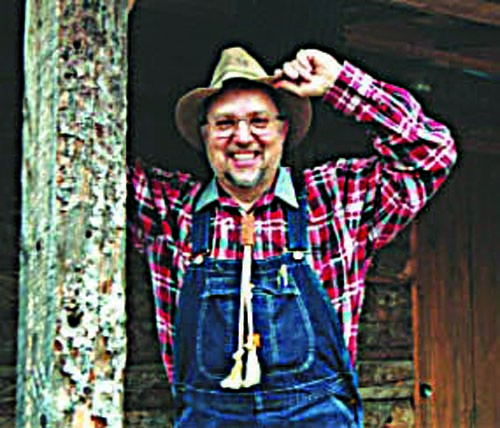Reports of new and exciting advances in genetic engineering have filled the agri-news lately. For instance, scientists have finished the entire genetic map of wheat, which holds all kinds of promise for better quality, more diverse, and more hardy types of wheat.
Other reports of new ways to splice certain trait-carrying genes into existing organisms. That holds promise for finding cures for various plant, animal and human diseases.
Now, I hope those enterprising genetic engineers turn their attention to ways to rid the world of invasive plants. I think I’ve thought of a way they can eliminate the invasive eastern redcedar and do a great humanitarian deed at the same time.
Here’s the plan: A big infestation of the common bagworm will kill a cedar tree over time. So, the genetic engineers should develop a “super giant bagworm” the size and shape of a soccer ball. Those super bagworms could denude a cedar tree in days and kill it. But, the humanitarian bonus comes from picking those huge bagworm sacs, inflating them with air, and donating them to poor soccer-playing children all over the world. The silk in those super bagworms is tough enuf to withstand a lot of soccer.
And, best of all, within a few years, the rural countryside would be devoid of those ugly, water-sucking cedar trees. I know the Flint Hills would sure look better without them.
Another invasive tree species is the common hedge tree, otherwise known as the Osage Orange or the Bois d’Arc tree. Those trees are water hogs, too. So, how about the genetic engineers making those hedge trees into a perennial source of income other then fence posts or firewood?
How? Easy. Just splice certain genes from the rubber tree into the hedge tree genome. The bountiful hedge apples, or Osage oranges, produced each year by hedge trees already contains a sticky, milky latex similar to the sap of a rubber tree. With the right rubber-tree genes spliced in, America could eliminate buying rubber from around the world and make all our own rubber from a domestic source — hedge trees.
Imagine how many unemployed American could find part-time work in the fall harvesting the rubber-latex-containing hedge apples. Why, there’s so many hedge trees in the Flint Hills that they could support the creation of a rubber manufacturing industry, so those same folks might find employment full-time in the hedge-rubber factory. It’s all so simple with creative genetic engineering.
***
Now lets look at three other nuisance invasive species — Sericea lespedeza, leafy spurge, and kudzu. All are highly productive and hard to kill. The problem with all of those plants is that nothing really likes to eat them.
So, enter the genetic engineers. They could splice genes from sugar cane or sugar beets into all of those invasive species and make them sweet and palatable to any animal that eats plants. They’d be so tasty and nutritious that even the back-to-Earth folks would rush into the countryside to harvest sericea, spurge, and kudzu for salad greens.
Again, within a few years, the spread of those plants would be a good thing because they never have to be replanted.
***
It’s not too long after the Christmas holiday for this story:
It was the day after Christmas at a rural church. The pastor of the church was looking over the church lawn when he noticed that the baby Jesus was missing from among the figurines in the nativity scene.
He hurried outside and saw a little boy with a red wagon and in the wagon was the figurine of the little infant Jesus.
So he walked up to the boy and said, “Well, where did you get your passenger, my little fine friend?”
The little boy replied, “I got Him out of that little house on the church grass.”
“And why did you take Him?” the minister inquired further.
The boy explained, “Well, about a week before Christmas I prayed to the little Lord Jesus and I told Him if He would bring me a red wagon for Christmas I would give Him a ride back to our house in it.”
***
It was with sadness that I noticed last week that my good friend, cartoonist Jerry Palen, is shelving the talented pen that created the Stampede cartoon every week for 43 years. It’s a shame that every good road has to have an end.
The antics of Jerry’s Elmo and Flo, their dog and rickety pickup truck were a humor staple in rural publications around American for more than four decades.
I recall once hiring Jerry to do a custom cartoon about sorting cattle for a friend who ran a livestock auction. I recall hosting him overnight in our home after Jerry put on a show in Iowa and then fighting a blizzard the next morning to get him to the Des Moines airport. As thanks, he gave me a pewter figurine of the big-booted Flo that still sits on a shelf in our home.
Jerry was one of the best cartoonists at capturing with minimal pen strokes the “feel and heart” of farming and ranching in America. I’ll miss his cartoons, but I’m glad he’s going to continue his annual calendars. Good luck and restored health in retirement, Jerry. You’ve earned it.
Have a good ‘un, ya’ all.


